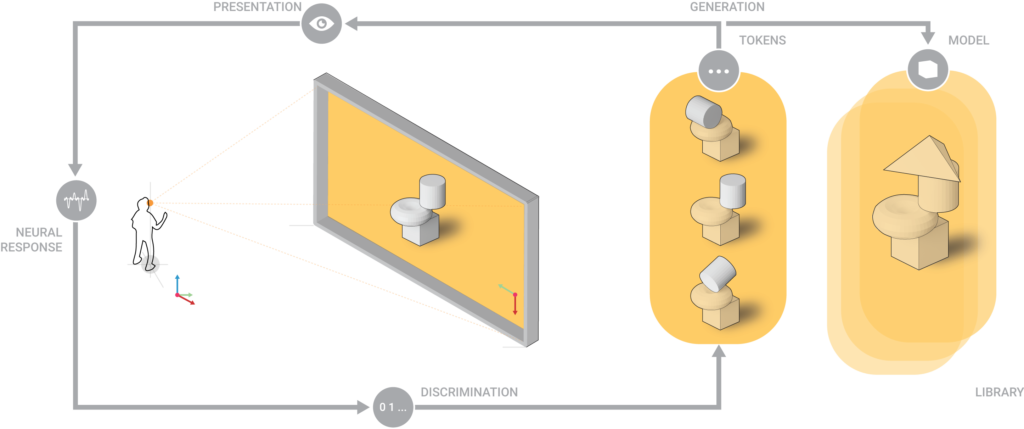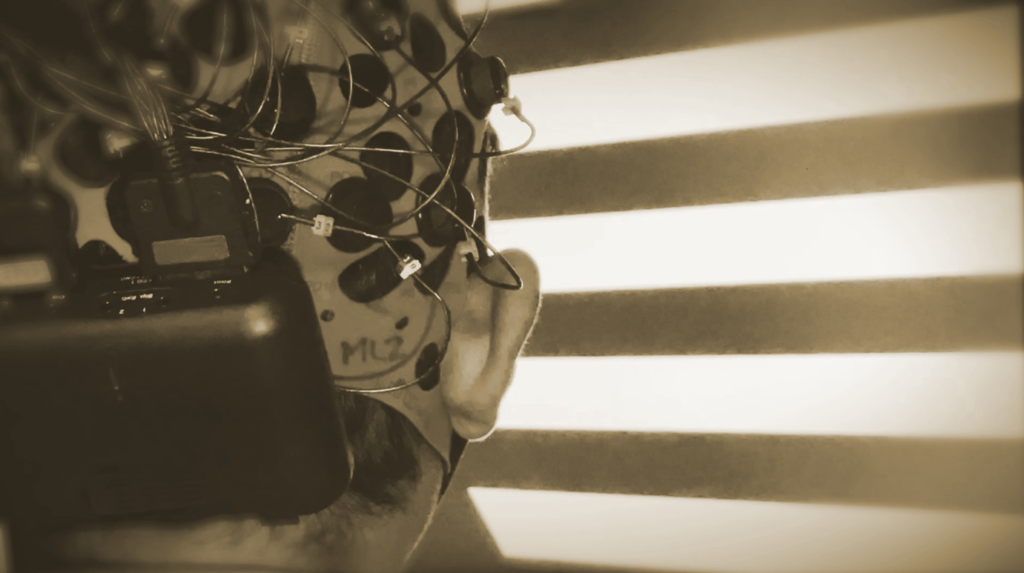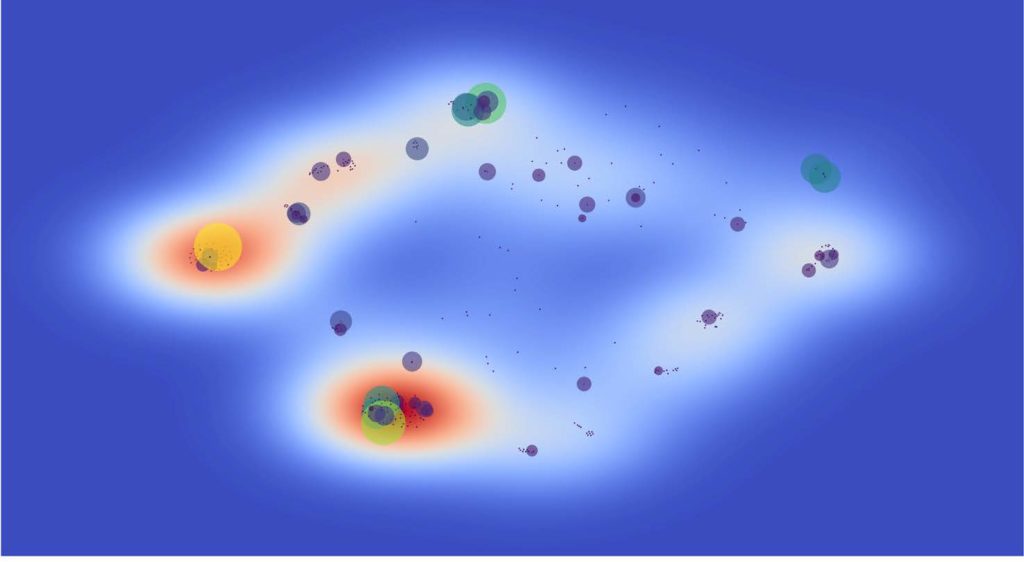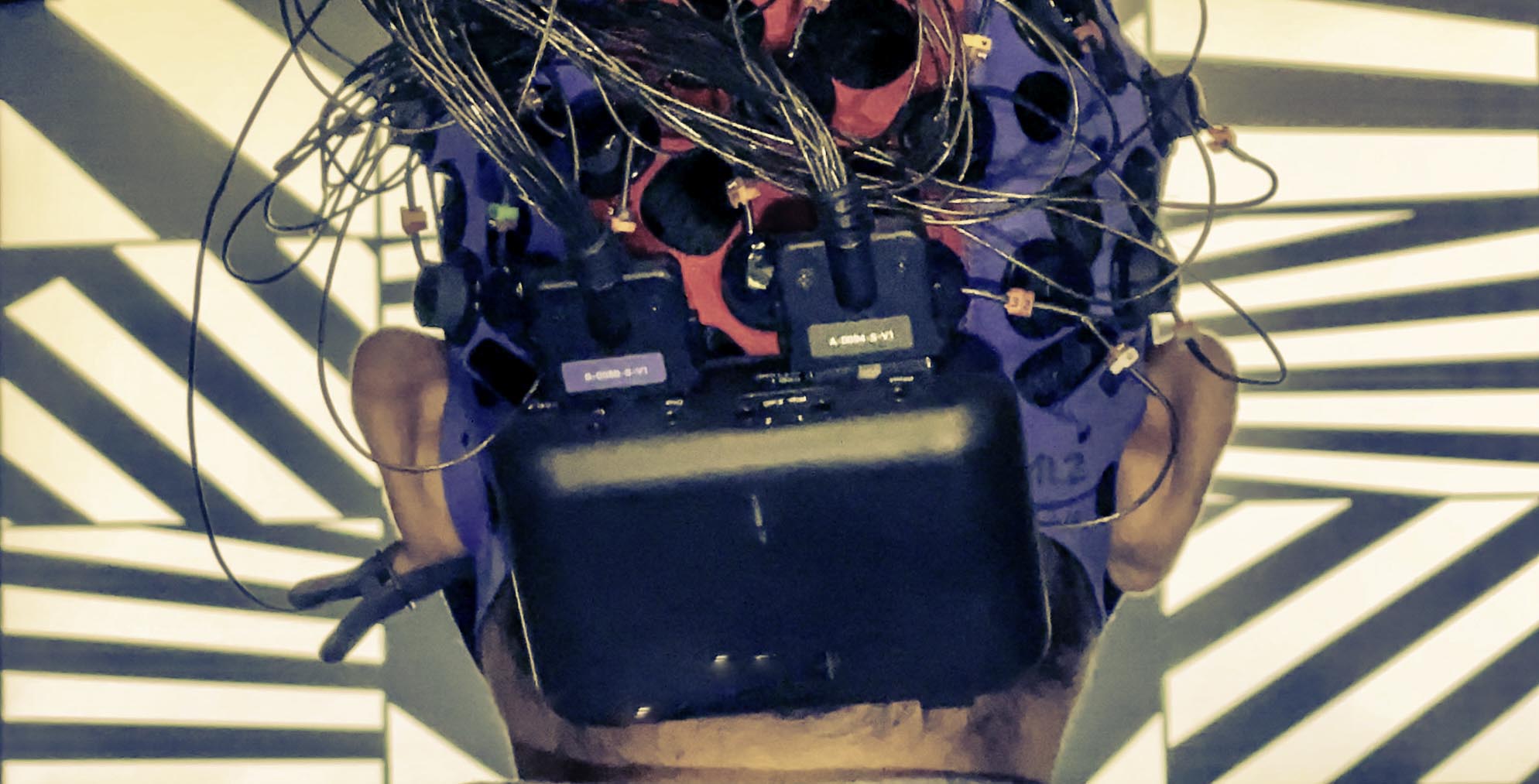NeuraMod
Architectural Modelling with Neural Potentials.

Lay Summary
Description


Funding & Institutions
The Neuramod project is fully funded by the Swiss National Science Foundation SNSF Project Funding Div. 1-2 for Humanities, Social sciences, Mathematics, Natural and Engineering sciences. It is hosted at the Institute of Technology for Architecture (ITA), Chair of Digital Architectonics (CAAD) of ETH Zürich. Its two main individual partners are Dr. Ricardo Chavarriaga from the Center for Artificial Intelligence (CAI) of ZHAW Zürich, and Dr. Marco Congedo from the Vision and Brain Signal Processing Group (GIPSA) of CNRS Grenoble. Further secondary partnerships might be sought along the project for complementing advisory, scientific or industrial expertises.
Aim
A use-inspired Basic Research Project for a novel architectural modelling technology.

Hypotheses
Relevance
Sed ut perspiciatis unde omnis iste natus error sit voluptatem accusantium doloremque laudantium, totam rem aperiam, eaque ipsa quae ab illo inventore veritatis et quasi architecto beatae vitae dicta sunt explicabo. Nemo enim ipsam voluptatem quia voluptas sit aspernatur aut odit aut fugit, sed quia consequuntur magni dolores eos qui ratione voluptatem sequi nesciunt. Neque porro quisquam est, qui dolorem ipsum quia dolor sit amet, consectetur, adipisci velit, sed quia non numquam eius modi tempora incidunt ut labore et dolore magnam aliquam quaerat voluptatem. Ut enim ad minima veniam, quis nostrum exercitationem ullam corporis suscipit laboriosam, nisi ut aliquid ex ea commodi consequatur?
Quis autem vel eum iure reprehenderit qui in ea voluptate velit esse quam nihil molestiae consequatur, vel illum qui dolorem eum fugiat quo voluptas nulla pariatur? Sed ut perspiciatis unde omnis iste natus error sit voluptatem accusantium doloremque laudantium, totam rem aperiam, eaque ipsa quae ab illo inventore veritatis et quasi architecto beatae vitae dicta sunt explicabo. Nemo enim ipsam voluptatem quia voluptas sit aspernatur aut odit aut fugit, sed quia consequuntur magni dolores eos qui ratione voluptatem sequi nesciunt. Neque porro quisquam est, qui dolorem ipsum quia dolor sit amet, consectetur, adipisci velit, sed quia non numquam eius modi tempora incidunt ut labore et dolore magnam aliquam quaerat voluptatem. Ut enim ad minima veniam, quis nostrum exercitationem ullam corporis suscipit laboriosam, nisi ut aliquid ex ea commodi consequatur?


Impact
Sed ut perspiciatis unde omnis iste natus error sit voluptatem accusantium doloremque laudantium, totam rem aperiam, eaque ipsa quae ab illo inventore veritatis et quasi architecto beatae vitae dicta sunt explicabo. Nemo enim ipsam voluptatem quia voluptas sit aspernatur aut odit aut fugit, sed quia consequuntur magni dolores eos qui ratione voluptatem sequi nesciunt. Neque porro quisquam est, qui dolorem ipsum quia dolor sit amet, consectetur, adipisci velit, sed quia non numquam eius modi tempora incidunt ut labore et dolore magnam aliquam quaerat voluptatem. Ut enim ad minima veniam, quis nostrum exercitationem ullam corporis suscipit laboriosam, nisi ut aliquid ex ea commodi consequatur.
Timeline
Every milestone event of the project put as a timeline along its duration.
Mar. 2020
Project Funded by SNSF!
The Swiss National Science Foundation (SNSF) has officially granted full funding to the Neuramod project for a period of 48 months. Under both Divisions 1-2 (Humanities & Social Sciences / Mathematics, Natural & Engineering Sciences), the project has been selected among 245 related applications to start in 2021
Feb. 2021
Neuramod has begun
Hosted at the Chair of Digital Architectonics (Prof. Dr. Hovestadt, fka. CAAD) within the Institute of Technology for Architecture (ITA) and the Department of Architecture (D-ARCH) of ETH Zürich, the project will focus on the prototyping and development of new modeling technologies with neural potentials. It will run until 2024
Oct. 2021
Phase 1 launched
After careful design and preparations, the first phase of our BCI experiments has been reviewed by the Ethics Committee and granted green light. An initial sample of the population involved in the activity sector of the built environment will participate in data acquisition sessions, with the support of the Neurolab and the COG Chair of D-GESS ETH.

